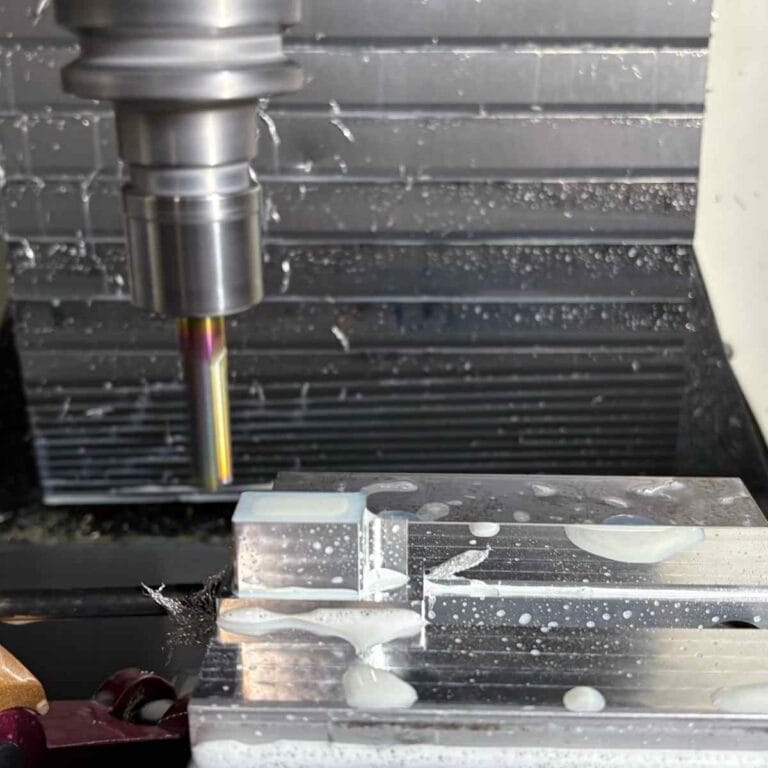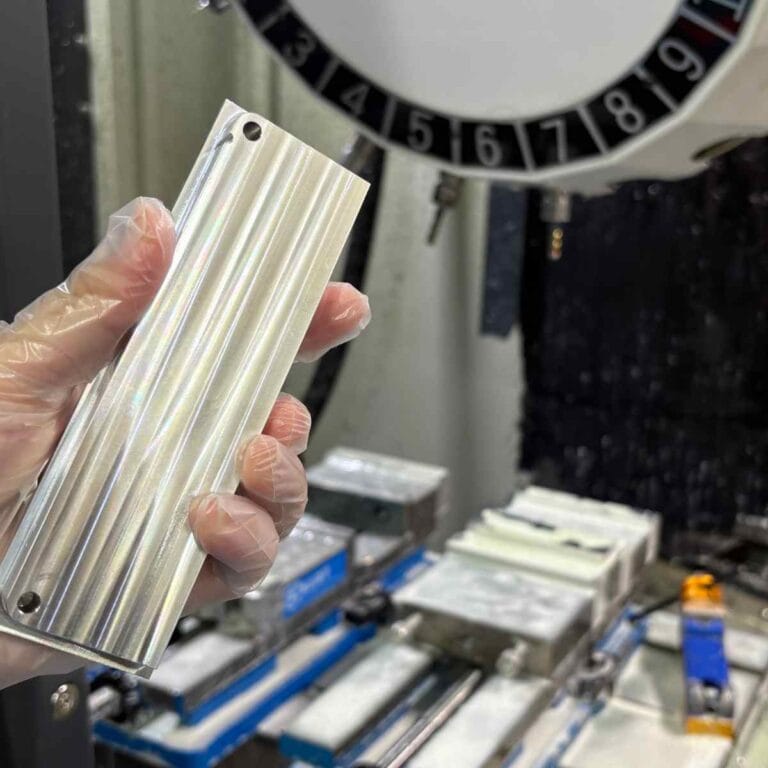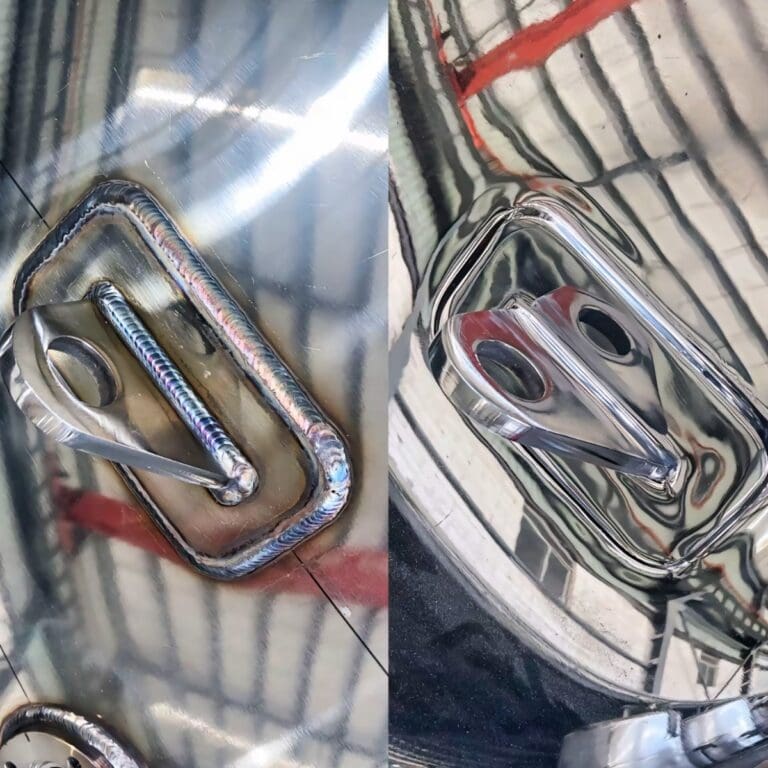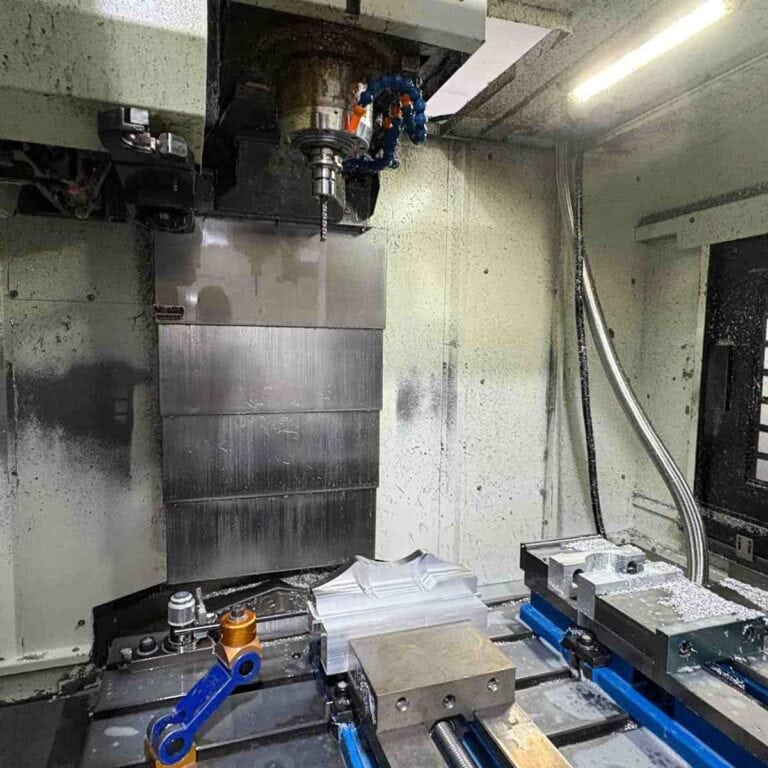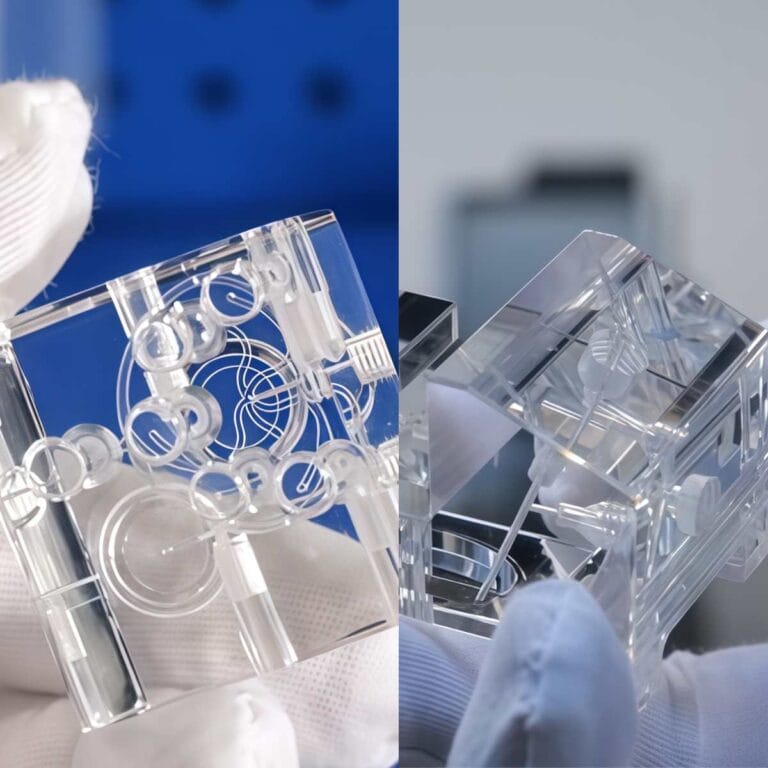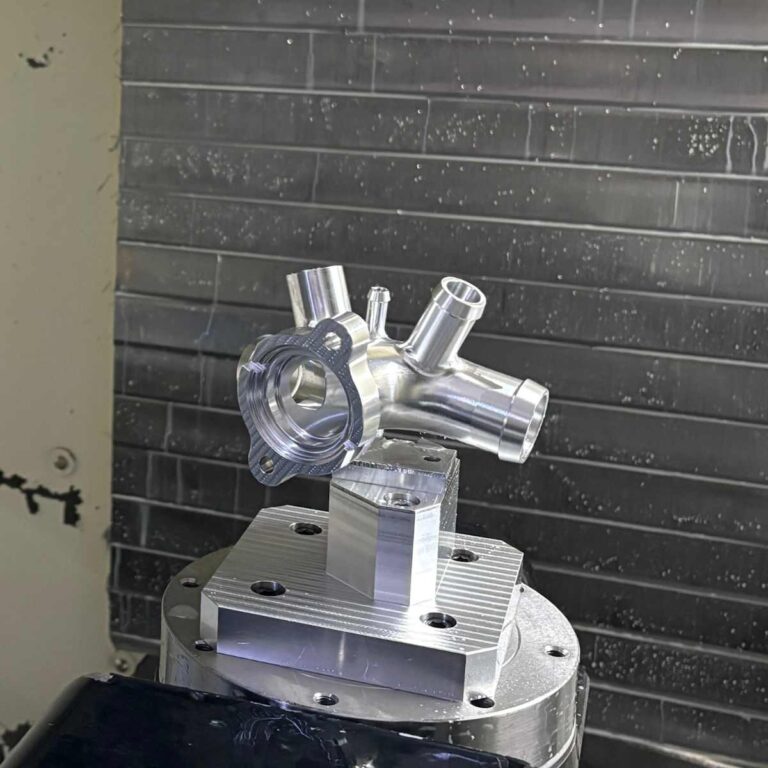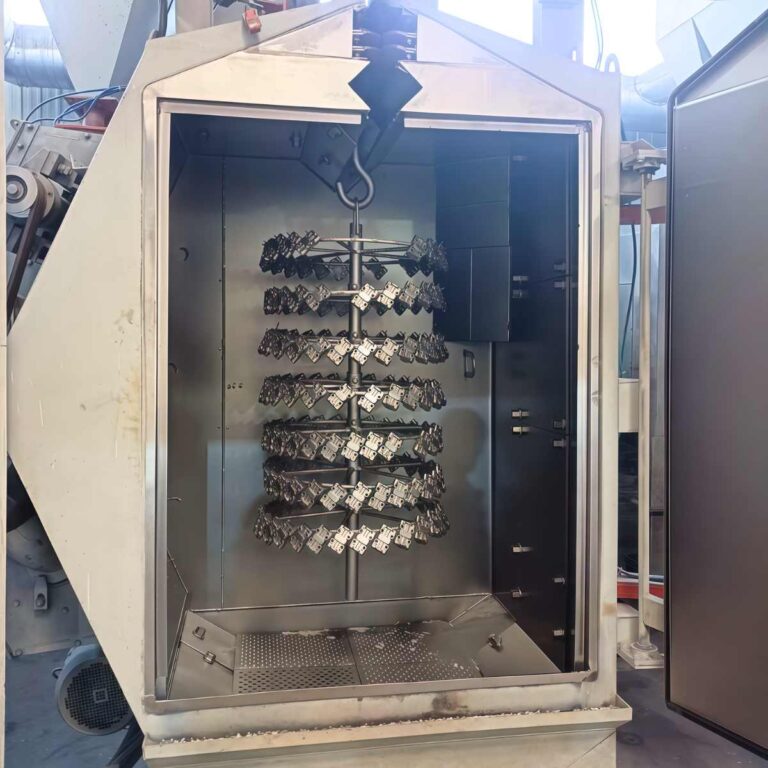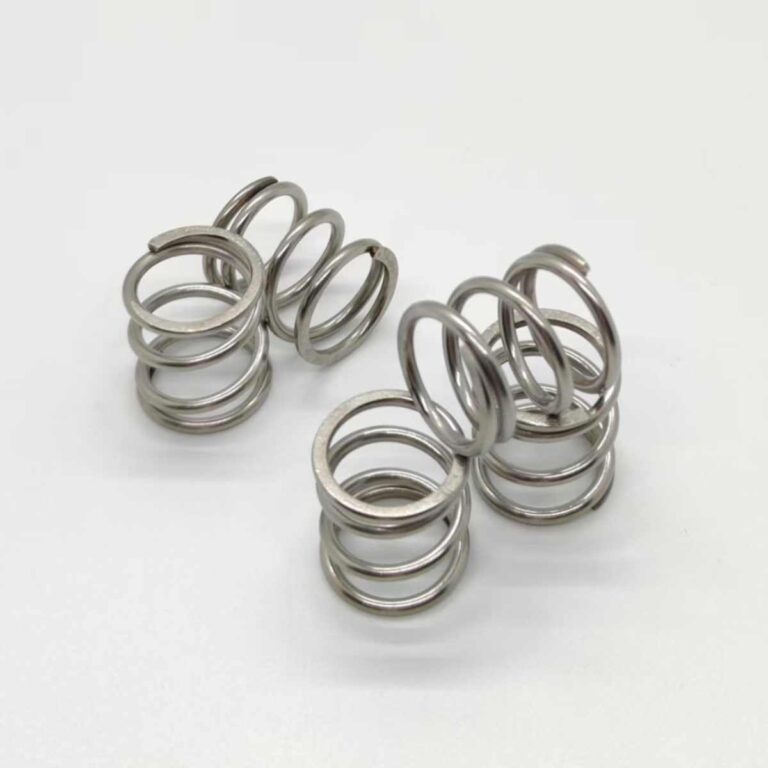In CNC machining, Acetal vs Delrin is a key comparison for precision parts. Both offer strength, low friction, and stability, but differ in structure and performance. This guide helps you choose the right material for your project.
What Is Acetal (Copolymer POM-C)
Acetal, also known as Polyoxymethylene (POM), is a semi-crystalline engineering thermoplastic known for its balance of strength, stiffness, and chemical resistance. Its copolymer structure offers better dimensional stability and hot-water resistance than homopolymer POM.
Get 20% offf
Your First Order
What Is The Structure and Composition Of Acetal (POM-C)
Acetal, also known as polyoxymethylene copolymer (POM-C), is a polymer formed by copolymerizing different monomers. In addition to the repeating CH₂O units, comonomers are incorporated into the molecular chain, slightly reducing crystallinity but significantly improving chemical resistance.
This molecular design suppresses thermal degradation and minimizes centerline porosity, a common issue in homopolymers.
Unlike Delrin’s homopolymer structure, Acetal exhibits better stability under high-temperature and acid-alkaline conditions.
Physical And Mechanical Properties Of Acetal
| Property | Value Range | Description |
| Tensile Strength | 60–70 MPa | High structural strength |
| Flexural Modulus | 2500–2800 MPa | Excellent rigidity |
| Melting Point | 165–175°C | Recyclable |
| Water Absorption | 0.2% (24h) | Excellent dimensional stability |
| Density | 1.41 g/cm³ | Lightweight and stable |
| Continuous Use Temp. | 100–110°C | Reliable under heat |
Common Grades And Applications Of Acetal
Today’s market offers a variety of commercial grades of Acetal copolymer, each optimized for specific mechanical and chemical performance:
Hostaform® (Celanese): Excellent hot-water and chemical resistance. widely used in food-processing equipment and fluid-control valve housings.
Celcon® (Ticona): Balanced mechanical properties and good moldability. ideal for high-volume gears and connectors.
Ultraform® (BASF): Outstanding toughness and impact strength. used in automotive structural parts and electronic housings.
Kepital® (Kolon): Superior fatigue resistance and low friction. suitable for linear guides, transmission parts, and pump components.
Advantages And Limitations Of Acetal
Acetal (copolymer POM-C) is a well-balanced engineering plastic that combines rigidity, strength, and machinability.
It is widely used in CNC precision component manufacturing for applications requiring tight tolerances and chemical durability.
Below is a data-driven overview of its key strengths and weaknesses.
Advantages
Excellent Dimensional Stability
Acetal has a linear thermal expansion coefficient of 110 × 10⁻⁶/K (at 23 °C) and a moisture absorption rate of only 0.2 %, resulting in negligible deformation under temperature or humidity variation.
In aerospace, medical, and automation applications, Acetal maintains ±0.02 mm precision, making it ideal for gears, sliders, and bushings.
Low Friction and Superior Wear Resistance
With a dynamic friction coefficient of 0.2–0.35 (against steel), Acetal is naturally self-lubricating, which reduces wear and operational noise.
Compared with nylon (≈ 0.4–0.6), Acetal extends the service life of moving components by 20–30 %, excelling in valves, gear sets, and rail systems.
Excellent Chemical Resistance
Acetal withstands exposure to fuels, oils, alcohols, mild acids, and bases, maintaining performance in the pH 4–9 range.
This makes it the material of choice for fuel fittings, fluid-control valves, and food-processing machinery parts requiring corrosion resistance.
Outstanding Machinability
Acetal offers smooth chip formation and fine surface finishes, supporting CNC turning, milling, drilling, and injection molding.
At cutting speeds up to 600 m/min, it causes minimal tool wear, making it highly suitable for automated, high-volume machining.
Cost Efficiency
Compared with Delrin (POM-H), Acetal typically costs 10–20 % less while offering stable supply and multiple color options.
It is a cost-effective solution for industrial mass production of pump housings, sliders, and transmission components.
Limitations
Slightly Lower Mechanical Strength
Acetal’s tensile strength averages 62–70 MPa, while Delrin reaches 75–80 MPa.
Therefore, in high-load or impact-intensive applications—such as cantilever gears or structural joints—Acetal provides less stability and may require a stronger alternative.
Limited Heat Resistance
Acetal’s continuous service temperature range is –40 °C to +100 °C, with short-term exposure up to 120 °C.
Beyond this range, molecular degradation or surface oxidation may occur, making it unsuitable for high-temperature friction or steam environments.
Restricted Color and Surface Treatment Options
Acetal can be pigmented using masterbatch additives, but due to its high crystallinity, dye adhesion is poor and surface gloss uniformity is difficult to maintain.
Thus, for decorative or aesthetic components, materials like ABS or PC are generally preferred.
What Is Delrin (Homopolymer POM-H)
Delrin, developed by DuPont, is a high-crystallinity homopolymer POM with outstanding mechanical strength and fatigue endurance. It’s ideal for load-bearing and dynamic precision parts.

What Are The Structure And Chemical Composition Of Derlin
Delrin’s uniform CH₂O chain results in a tightly packed crystalline lattice, giving it high stiffness but susceptibility to centerline porosity during extrusion.
Physical And Mechanical Properties Of derlin
| Property | Value Range | Description |
| Tensile Strength | 70–75 MPa | Superior mechanical strength |
| Flexural Modulus | 3000 MPa | High rigidity |
| Melting Point | 175°C | Highly crystalline |
| Water Absorption | 0.25% (24h) | Low |
| Density | 1.42 g/cm³ | Uniform density |
| Continuous Use Temp. | 110–120°C | Ideal for dynamic use |
Common Grades Of Derlin
Delrin® 100 / 150 Series — General-Purpose Grades
Characteristics: High crystallinity, excellent stiffness, creep resistance, and fatigue strength.
Typical Properties: Tensile strength ≈ 75–80 MPa. flexural modulus ≈ 2900 MPa.
Applications: Gears, rollers, couplings, rails, and precision structural parts.
Note: Delrin 150 offers better flow for injection molding. Delrin 100 has superior fatigue resistance for CNC machining.
Delrin® AF Series — PTFE-Filled, Self-Lubricating Grades
Composition: Contains approx. 13 % PTFE (Polytetrafluoroethylene).
Advantages: Reduces coefficient of friction to 0.15–0.25, offering dry lubrication.
Applications: Bearings, bushings, conveyor rollers, sliders.
Example: For an automation client, we machined Delrin AF 100 bushings that maintained a mirror-smooth surface after thousands of operating cycles—virtually no wear observed.
Delrin® FG Series — Food-Grade Grades
Compliance: Certified by FDA, NSF, and USDA for direct food or potable water contact.
Properties: Similar mechanical strength to general grades, with thermal resistance up to 110 °C.
Applications: Food-handling parts, filling-machine guides, beverage valves, coffee-machine sliders.
Delrin® Glass-Filled Grades — Glass-Fiber Reinforced
Composition: 20–25 % glass fiber reinforcement.
Properties: Flexural modulus increases to 4800–5500 MPa, offering superior rigidity and dimensional stability.
Applications: High-load structures, automotive linkage systems, and housing components.
Note: Use carbide tools during machining and control heat to prevent whitening.
Delrin® 527UV / 570 — UV-Stabilized & High-Performance Grades
Characteristics: Formulated with UV stabilizers and antioxidants. suitable for outdoor exposure.
Delrin 570: Improved impact strength by ~30 % over standard grades.
Applications: Outdoor gear, automotive lock systems, industrial covers, and aerospace interiors.
Advantages And Limitations Of Delrin
Delrin (POM-H) is known for its high crystallinity and superior molecular uniformity, giving it the highest mechanical strength among acetal-based plastics.Compared to Acetal Copolymer (POM-C), Delrin offers better rigidity and fatigue resistance but slightly lower chemical and thermal stability.
Advantages
Superior Mechanical Strength and Rigidity
Tensile strength ≈ 75–85 MPa. flexural modulus ≈ 3000 MPa.
Maintains dimensional accuracy between –40 °C to +120 °C.
Provides 20–25 % higher creep resistance than copolymer grades.
Excellent Fatigue and Elastic Recovery
Ideal for snap-fits, clips, gear assemblies, and repeated motion parts.
Retains shape and elasticity after millions of cycles.
Outstanding Wear and Friction Performance
Dynamic coefficient of friction ≈ 0.2–0.35.
Up to 30 % longer lifespan than nylon in dry-running conditions.
Precision Machinability and Molding Ease
Achieves fine surface finishes (Ra < 0.4 µm).
Offers high mold flow and dimensional repeatability for complex parts.
Limitations
Weaker Chemical Resistance
Degrades under acidic or strongly alkaline conditions (pH < 4 or > 9).
Not suitable for prolonged exposure to hot water or steam.
Centerline Porosity Issue
Occurs when the outer layer cools faster than the core, leading to voids or reduced density.
Avoid for medical, food-contact, or airtight components requiring uniformity.
Higher Material Cost
Typically 10–20 % more expensive than Acetal Copolymer (POM-C), but offers higher performance and lifespan.
What Are the Key Differences Between Acetal And Delrin
Although Acetal (POM-C) and Delrin (POM-H) are both polyoxymethylene plastics, their structures create distinct properties. Delrin’s homopolymer structure gives it higher strength and stiffness, while Acetal’s copolymer form offers better chemical resistance and stability.
Mechanical Strength And Hardness
Delrin: Tensile strength of 75–85 MPa and Shore hardness of 86D — about 10–15% higher than Acetal.
Acetal: Tensile strength of 60–70 MPa and Shore hardness of 85D.
Delrin’s higher crystallinity gives it better rigidity under sustained load, making it suitable for gears, couplings, and high-stress assemblies.In my machining projects, we often recommend Delrin 150 or glass-filled grades for components requiring high stiffness and wear resistance.
Flexural And Tensile Properties
Flexural Modulus: Delrin = 2900–3100 MPa. Acetal = 2500–2800 MPa.
Elongation at Yield: Delrin ≈ 10–12%. Acetal ≈ 15–20%.
Acetal demonstrates slightly greater ductility and elasticity, making it preferable for snap-fit designs or flexible components where rebound and deformation control are key.
Dimensional Stability And Centerline Porosity
Thermal Expansion Coefficient: Acetal ≈ 110 × 10⁻⁶/K. Delrin ≈ 125 × 10⁻⁶/K — Acetal is more dimensionally stable.
Centerline Porosity: Delrin is prone to internal voids due to uneven cooling during extrusion.
Acetal’s copolymer structure minimizes this issue, making it ideal for food-contact, medical, or sealed assemblies.In practice, large Delrin rods may show 5–7% density reduction in the center, requiring secondary milling to ensure structural integrity.
Chemical Resistance And Moisture Absorption
Chemical Resistance: Acetal withstands fuels, alcohols, and weak acids/bases (pH 4–9).
Delrin degrades under strong acids or bases and prolonged hot-water exposure (>80°C).
Moisture Absorption: Acetal ≈ 0.2% (24h). Delrin ≈ 0.35% (24h).
Acetal’s lower absorption rate makes it better suited for humid or fluid-exposed environments, such as valves and manifolds.
Thermal And Heat Resistance
Acetal: Continuous service temperature 100–110°C. short-term 120°C.
Delrin: Continuous service up to 120°C, short-term peak 140°C.
However, Delrin is more prone to oxidation discoloration under high heat, while Acetal resists hydrolysis and thermal aging better.For components in hot oil or steam systems, Acetal is the safer and longer-lasting choice.
Machinability And Processing
Both materials are excellent for CNC turning, milling, drilling, and injection molding.
Delrin produces smoother, continuous chips — ideal for automatic lathe production, Acetal allows better heat dissipation and surface finishing.
During injection molding, Acetal offers a wider processing window, while Delrin requires tight temperature control (±3°C) to prevent degradation.
Cost And Availability
Cost: Acetal is typically 10–20% cheaper than Delrin.
Delrin commands a brand premium for its superior mechanical performance and consistency.
Supply: Acetal is available from multiple global manufacturers (Celanese, BASF, Kolon), ensuring stable and flexible lead times.
How To Choose The Right Material For CNC Machining
In CNC machining, choosing the right material determines precision, durability, and overall cost. Projects vary in strength, finish, and resistance needs. Acetal (POM-C) and Delrin (POM-H) are top engineering plastics, each excelling differently. Understanding load, environment, cost, and aesthetics ensures the best machining choice.
Load And Strength Requirements
For parts under heavy or continuous stress, Delrin offers a tensile strength up to 80 MPa and a flexural modulus around 3000 MPa, outperforming Acetal.
High-load parts: Gears, couplings, and drive shafts benefit from Delrin’s rigidity and fatigue resistance.
Medium-load components: Slides, housings, and valve parts work well with Acetal (60–70 MPa), reducing cost without sacrificing performance.
In my experience of selecting materials, we often recommend Delrin 150 or glass-filled grades for customers requiring higher structural integrity.
Environmental And Corrosion Considerations
Chemical exposure and humidity greatly affect material lifespan.
Acetal (POM-C): Remains stable between pH 4–9, resisting fuels, lubricants, and alcohols — ideal for fluid control valves, fuel fittings, and food equipment.
Delrin (POM-H): Performs best in dry or neutral environments but degrades faster under prolonged exposure to hot or alkaline fluids.
For components in wet or corrosive environments, Acetal is preferred, for dry, high-stress assemblies, Delrin is the superior choice.
Weight, Cost, And Appearance
When scaling production, cost and appearance often drive material choice:
Weight: Both have similar density (~1.41 g/cm³), but Acetal exhibits lower shrinkage on large molded parts.
Cost: Acetal is typically 10–20% cheaper than Delrin, making it ideal for cost-sensitive projects.
Aesthetics: Delrin’s higher crystallinity provides a smoother and more uniform finish, ideal for visible components or premium assemblies.
For example, European clients often choose Delrin for exterior housings requiring a glossy, uniform surface.
When To Choose Acetal vs. Delrin
| Application | Recommended Material | Reason |
| High-load gears or structural parts | Delrin (POM-H) | Superior strength and fatigue resistance |
| Moist or chemical environments | Acetal (POM-C) | Excellent hydrolysis and chemical stability |
| Cost-sensitive, mass production | Acetal | Lower material cost, good consistency |
| Aesthetic or precision components | Delrin | Better surface finish and rigidity |
In summary, choose Delrin for strength and precision, and choose Acetal for stability and economy.Evaluating these factors helps engineers achieve an optimal balance between performance, cost, and manufacturability in CNC plastic machining.
Key Machining Tips For Acetal And Delrin
Acetal (POM-C) and Delrin (POM-H) are common CNC plastics known for stability, low friction, and strength. Their thermal and structural differences affect machining. Mastering cutting speeds, stress control, and finishing ensures precise, high-quality parts with minimal waste and cost.

Cutting Speed, Tooling, And Coolant Parameters
Both Acetal and Delrin generate heat quickly during cutting due to their crystalline structure. Proper parameter setup ensures accuracy and surface finish:
Cutting Speed (Vc): Recommended 400–700 m/min. Higher speeds (600–700 m/min) improve finish quality for Delrin components.
Feed Rate (f): 0.1–0.3 mm/rev depending on rigidity and tool sharpness.
Tooling: Use carbide cutters with a tip radius of 0.2–0.4 mm to prevent chipping or burring.
Coolant: For most operations, compressed air or mist cooling is sufficient. For mass production, water-soluble coolants (pH 6–8) help stabilize temperature and prevent oxidation.
In a real-world CNC machining case, we achieved a surface roughness of Ra0.6μm by using a linear speed of 500m/min and atomized cooling when milling Dellin gears at high speed.
Preventing Deformation And Dimensional Errors
Although both materials exhibit excellent stability, stress release during machining may cause warping if not handled correctly.
Material Conditioning: Precondition stock at 20–25°C for 24 hours before machining.
Light Cutting Strategy: Use multiple shallow passes (0.2–0.4 mm/pass) instead of one deep cut.
Fixturing: Apply soft jaws or vacuum clamping to avoid over-tightening.
Finish Machining Delay: For tight-tolerance parts (±0.02 mm), perform roughing first, then allow 12 hours for stress relaxation before finishing.
Polishing And Surface Finishing Techniques
Due to their low surface energy, both Acetal and Delrin resist conventional painting or plating. Physical and mechanical finishing methods are more effective.
Mechanical Polishing: Use 1000–3000 grit sandpaper with polishing compound to achieve a mirror-like finish.
Flame Polishing: Ideal for optical or aesthetic parts, though temperature control is critical to avoid melting.
Material Enhancement: For wear resistance, consider PTFE-filled Delrin AF or glass-filled POM-H grades.
Marking and Coloring: Acetal resists ink adhesion, laser marking or heat transfer printing ensures durable results.
For example, in a medical device component project, we used PTFE-modified Dellin material and applied precision polishing and laser marking to make the parts both wear-resistant and have a professional appearance.
Typical Applications Of Acetal And Delrin
Acetal and Delrin are used across automotive, electronics, medical, and automation industries for their strength, low friction, and stability. Delrin suits high-load precision parts, while Acetal offers better chemical resistance, low moisture absorption, and cost efficiency in CNC machining.
| Industry | Typical Applications | Recommended Material Type | Description |
| Automotive | Gears, fuel connectors, seat sliders, lock systems | Delrin (POM-H), Acetal (POM-C) | Delrin offers superior strength and fatigue resistance, Acetal provides cost-effectiveness and better chemical stability. |
| Electronics & Electrical | Insulating housings, connectors, switches, clips | Acetal (POM-C) | Excellent electrical insulation and dimensional accuracy for precision components. |
| Medical Devices | Injector pens, guide rails, pump housings, surgical handles | Delrin FG (Food Grade), PTFE-Filled Delrin | FDA-compliant grades ideal for contact with fluids and medical use. |
| Consumer Goods | Zippers, printer gears, toy parts, sports equipment | Acetal (POM-C) | Low friction and smooth finish suitable for frequent-use components. |
| Aerospace | Valve parts, instrument gears, fastener inserts, spacers | Delrin (POM-H) | High strength and fatigue resistance for lightweight precision assemblies. |
| Industrial Automation | Sliders, rollers, bushings, conveyor components | Acetal (POM-C), Delrin (POM-H) | Acetal resists chemicals, Delrin performs better under heavy loads. |
| Food Processing | Conveyor chains, guides, agitator blades, valve housings | Food-Grade Acetal (POM-C) | Resistant to oils, detergents, and sanitizers, ensures hygiene and precision. |
| Pumps & Fluid Handling | Valve cores, pump housings, seals, fittings | Acetal (POM-C) | Excellent chemical resistance and low moisture absorption for leak-free operation. |
FAQs
Can Acetal And Delrin Be Interchanged?
Yes, but with caution. Acetal and Delrin share similar machining behavior and mechanical profiles, both achieving tensile strengths around 65–75 MPa. However, I usually recommend Delrin for precision load-bearing components due to its higher crystallinity, and Acetal for chemically demanding environments or water-contact parts.
Why Is Delrin More Expensive?
Delrin costs about 10–20% more than Acetal because it is a homopolymer made exclusively by DuPont, offering higher molecular regularity and strength (up to 80 MPa tensile). The premium reflects better fatigue resistance, tight tolerances, and brand quality control, ideal for aerospace and precision gear machining.
Does Acetal Absorb Water?
Yes, but minimally. Acetal’s water absorption rate is roughly 0.2% after 24 hours at room temperature, much lower than nylon’s 1.5–2%. This ensures exceptional dimensional stability under humidity or submersion. In my CNC projects, Acetal parts maintain ±0.02 mm tolerance even in moisture-rich environments.
Is Delrin Stronger Than Acetal?
Yes. Delrin (POM-H) exhibits higher tensile and flexural strength—typically 75–80 MPa vs. Acetal’s 65–70 MPa—and better fatigue life under cyclic loading. I often use Delrin in gears, bushings, and fixtures where high stiffness and wear resistance under load are critical.
What Are The Key Differences Between Acetal And Delrin In CNC Machining?
Delrin offers superior rigidity, lower friction (μ≈0.2), and higher machinability for tight-tolerance parts. Acetal excels in chemical resistance, low porosity, and thermal stability up to 110 °C. In practice, I select Delrin for structural precision components and Acetal for corrosive or moisture-exposed applications.
Conclusion
In precision machining, Delrin represents strength and rigidity, while Acetal symbolizes stability and chemical resistance.The choice between them isn’t about which is better, but about matching the right material to the right environment.If you need a material that performs under high loads and dynamic stress, choose Delrin.If your project emphasizes corrosion resistance, long-term stability, and cost efficiency, Acetal is the ideal choice.Have ideas or questions about Acetal vs. Delrin?
Contact us to discuss your CNC machining needs.


